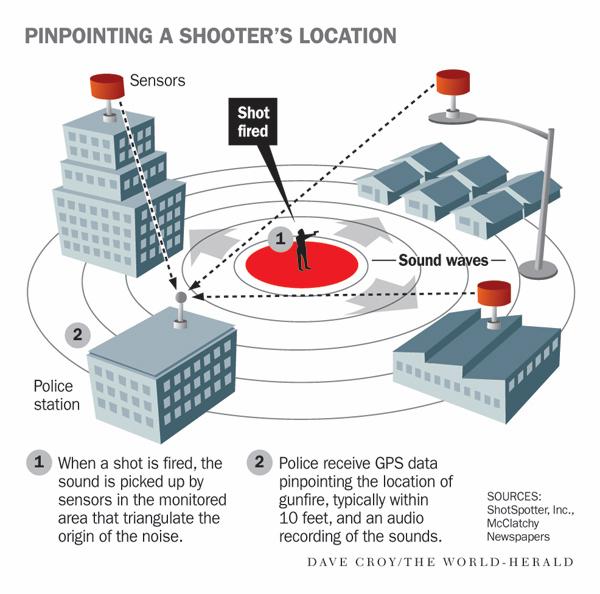ShotSpot: Where Accuracy Matters

April 28, 2015
Shootings occur almost every day throughout the five boroughs. People living in high crime areas often hear the gunshots but continue on with their day without reporting anything. Some people fear retaliation from the criminals, while others are accustomed to the shootings and have just made it another part of everyday life. To reduce involvement from the citizens, the NYPD has introduced a new technology that will automatically send signals to the police when gunshots are detected. The $1.5 million ShotSpotter system debuted in the Bronx and Brooklyn in March, and will be used for a trial of two years. According to Mayor Bill de Blasio, ShotSpotter will “make the city safer” and “keep our officers safer”. With shootings up eleven percent, this technology should definitely fulfill the Mayor’s dreams.
The ShotSpotter technology, which is ostensibly very accurate, requires a total of three sensors to detect gunshots. After the noise is recorded it is quickly sent to the ShotSpotter headquarters in California to ensure that the sounds are really gunshots and not just something loud outside. While ShotSpotter may seem great to many, some think the new technology contradicts the Fourth Amendment of the Constitution, which prevents unreasonable searches without a warrant. To keep the ShotSpotter system alive, it must disregard any audio heard during a shooting, as it cannot be used as evidence to prosecute a suspect. In the first few weeks of the ShotSpotter’s existence there were a total of fifty-five detected shootings in the Bronx; only 12 were reported to police. This clearly shows how desperate the ShotSpotter technology is needed to help clean up the streets from unnecessary gunfire and illegal weapons, and improve policemen’s chances of saving lives.


